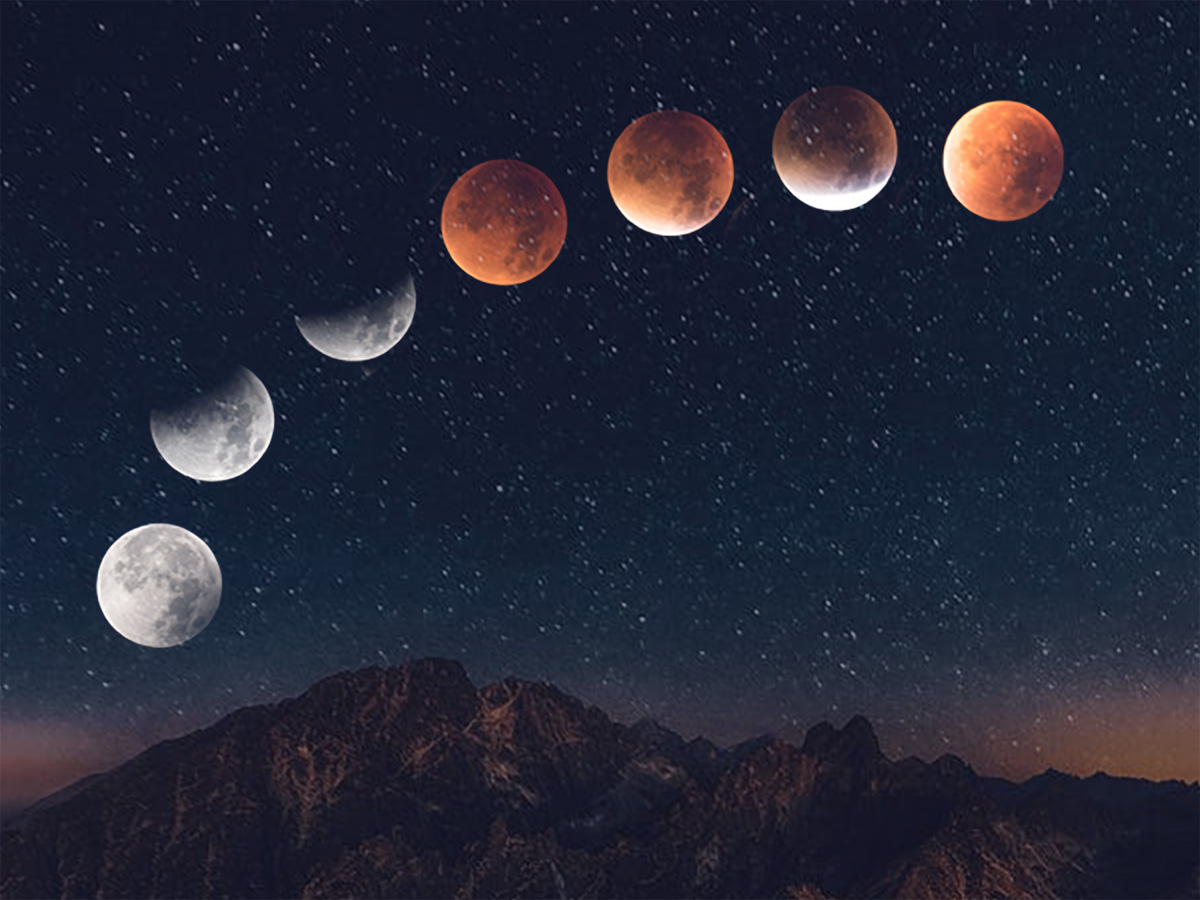The Moon is Earth’s constant companion, the first skywatching target pointed out to us as children. We watch its appearance change as the month progresses, and see patterns and pictures in its geological features.
It’s the object in the night sky that humanity knows best ― and the one that’s easiest to study. Whether your tools are a telescope, a pair of binoculars, or just your eyes, you can find plenty of features on the Moon.
We only ever see one side of the Moon from Earth. That’s because the interplay of gravity between Earth and Moon slows the Moon into a rotation that paces its own. The Moon rotates, but it rotates at the same speed that it orbits around Earth. This keeps the same side always turned toward us. We call this being “tidally locked.”
The Moon has no glow of its own, but shines with the reflected light of the Sun. During its crescent phase in the twilight or dawn, you can also sometimes see the dark portion of the Moon glowing faintly in the sunlight that reflects off Earth, an effect called earthshine.
You can look at the Moon during any of its illuminated phases, but for better viewing of craters and mountains, try phases other than the full Moon. The shadows on the surface will be more pronounced, and help distinguish features you might otherwise miss.
Eyeballing the Moon
Looking at the Moon with only your eyes, you see mostly areas of white and gray. These gray patches are solidified volcanic lava flows. In the Moon’s youth, its interior was still molten, and magma would erupt onto its surface. These dark areas formed when massive asteroid or meteorite impacts on the Moon’s surface created basins. Because the impact basins were often the lowest places on the Moon’s surface, they would begin to fill with erupting lava. The lava was similar to the basalt that erupts on Earth and, like on Earth, cooled to form a relatively dark-colored rock. We call these areas the lunar seas, or maria.
The lighter-colored areas are called the highlands, and show the earliest crust on the Moon, dominated by a type of rock called anorthosite, which is primarily made up of the white mineral anorthite or plagioclase.
What you see on the Moon with your eyes only will vary depending on your eyesight. Give yourself plenty of time for your eyes to adjust and look carefully. You may be able to see some of the larger impact craters on the Moon’s surface if your vision is sharp enough, including Copernicus, Kepler, and Aristarchus and Tycho. You may even be able to see some of the bright streaks that are ray systems emanating from the Copernicus or Tycho craters, created when material was thrown outward by the force of the original impacts.
Lunar Sightseeing
Pick up a pair of binoculars, and the Moon transforms.
With binoculars, you’ll still see the entire Moon at once, but now it’ll have terrain. Smooth-looking patterns of gray and white resolve into craters and large mountain ridges. You’ll be able to tell where the Moon is relatively undisturbed and where it’s been pockmarked by impacts. Binoculars introduce texture, especially when you look at the Moon when it’s in any other phase other than full. Focus particularly along the terminator line between light and dark, where features will cast long shadows that make them clearer. Choose binoculars with a magnification of 7 at a minimum. Though a magnification of 10 or 15 will provide more detail, you may need a tripod to steady them.
Under the gaze of a telescope, the Moon becomes too big to take in at once. Now you’ll see real mountains, and not just craters but the crater chains created when impact debris splashes around the main craters. You’ll see valleys, and the cracks in the Moon’s surface called rilles, formed when the lava that once filled a basin cooled and contracted. If this is your first time looking at the Moon through a telescope, you may feel the same wonder Galileo felt seeing that familiar orb in the sky transform into another world. Be sure to examine the Moon at many different phases and on different days. Parts of the Moon near the edge of the disk come into view at some times but not others, a wobbling phenomenon known as libration. Experienced observers can take advantage of favorable librations to see about 59 percent of the lunar surface.
Main Image
Credit: NASA | Location: Washington, D.C., United States
Daily Moon Guide
Explore NASA's interactive map for observing the Moon, each day of the year.
What will you see?


































